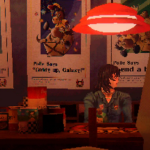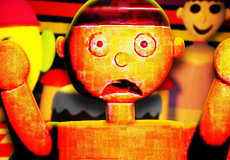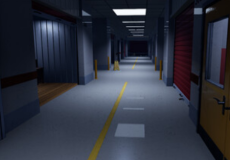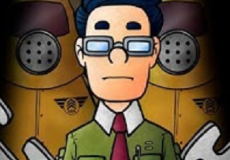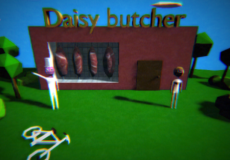

Amazing Digital Circus 7
Advertisement
Amazing Digital Circus 7 places the player in a controlled digital space where Caine dictates every rule of interaction. The setting is structured around shifting arenas, each designed to push the player toward quick thinking and strategic movement. Progression is not linear, as the environment changes unexpectedly and forces new decisions in real time. The primary objective is to adapt to these shifting conditions while maintaining control over limited resources.
Advertisement
Similiar games
Amazing Digital Circus 7 places the player in a controlled digital space where Caine dictates every rule of interaction. The setting is structured around shifting arenas, each designed to push the player toward quick thinking and strategic movement. Progression is not linear, as the environment changes unexpectedly and forces new decisions in real time. The primary objective is to adapt to these shifting conditions while maintaining control over limited resources.
Role Of Characters In Gameplay
Throughout the experience, familiar figures such as Pomni, Jax, Ragatha, Gangle, Zooble, and Kinger act as core elements of the system. They serve as guides, rivals, or obstacles depending on the stage and the choices the player makes. Trust and cooperation affect how tasks unfold, while rivalry introduces additional challenges. The characters are not static; their responses shift according to the behavior of the player, creating replay value with different scenarios.
Core Elements Of The Experience
The structure of Amazing Digital Circus 7 can be summarized through several recurring features that define the player’s journey:
· Shifting stages with unique layouts
· Dialogue-driven branching paths
· Cooperative puzzles requiring timed inputs
· Survival tasks with limited resources
· Combat sections using non-lethal weapons
· Multiple endings tied to earlier decisions
These mechanics are designed to link each segment together, making the outcome of one stage directly influence the next.
Progression Across Stages
The player moves through a series of escalating trials. Early areas emphasize teamwork and puzzle-solving, while later sections test combat readiness and endurance under pressure. Resource management becomes critical as items are limited and failure in one task carries consequences in later encounters. The combination of social interaction with mechanical survival ensures that each run through the game feels connected and dependent on past actions.
Endgame And Replay Loop
The final part of Amazing Digital Circus 7 evaluates all choices made throughout the journey. If the player balances survival, cooperation, and puzzle-solving, they can reach an ending where Caine reveals deeper information about the digital system. If not, the cycle restarts, placing the player back at the beginning with knowledge carried over into the next attempt. This loop system reinforces the design principle that progress depends on adaptation and repeated refinement of strategy.
Discuss Amazing Digital Circus 7

